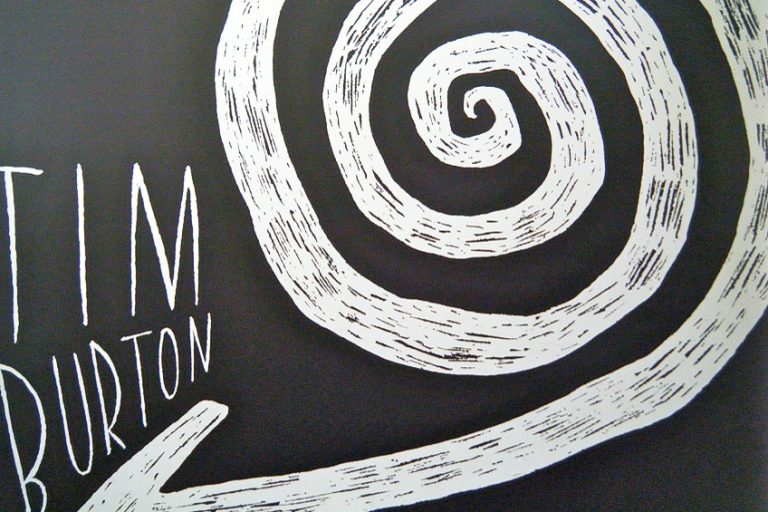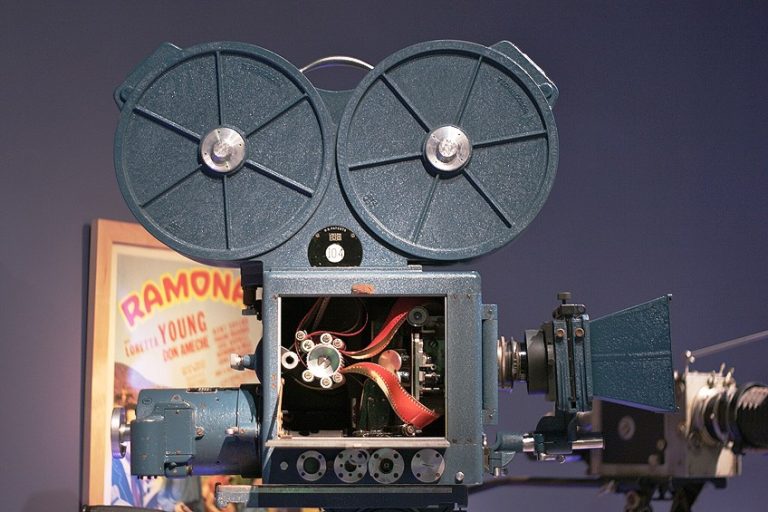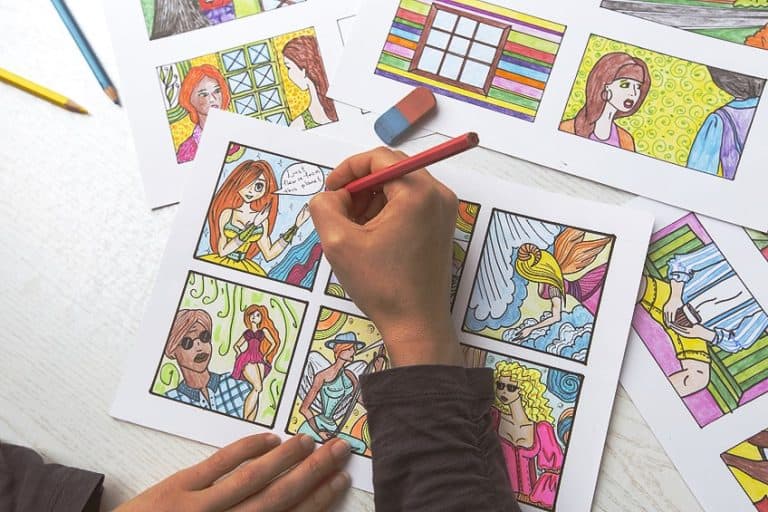What Is Cinematography? – Lights, Camera, Action!
Exploring the realm of visual storytelling in filmmaking raises questions about the essence of “what is cinematography?”. Within this domain, the interplay of various elements of cinematography becomes a canvas for creative expression and technical finesse. Embracing cinematography basics involves a journey into the intricate facets of lighting, framing, movement, and composition, hinting at the depth of this cinematic craft. A comparison between filmography vs. cinematography opens doors to contrasting perspectives, shaping a discourse that unveils the nuanced distinctions between these interconnected yet divergent realms of cinematic artistry. Below, we will be going over these nuanced distinctions, what elements make up cinematography, as well as the many films that showcase the very best of what cinematography has to offer!
What Are the Elements of Cinematography?
Exploring the enchanting realm of cinematography unravels the intricate tapestry of visual storytelling – an art form revered for its ability to captivate audiences and evoke profound emotions. To delve into the heart of “what is cinematography,” one must navigate through the foundational elements that compose its very essence. These elements of cinematography encapsulate the cornerstone principles that breathe life into cinematic narratives, intricately weaving together a symphony of visual elements that transcend the screen. At the core of cinematography basics lies an understanding of these pivotal aspects. These elements serve as the bedrock upon which the captivating stories within films are built – a fusion of technical expertise and artistic finesse that shapes the cinematic experience. The elements of cinematography are the building blocks that cinematographers and directors artfully combine to bring stories to life on screen. These elements include:

Lighting
Lighting emerges as a pre-eminent pillar within the realm of cinematography, transcending the mere act of illumination. It becomes an artful interplay of shadows and highlights, incapable of setting atmospheres, portraying emotions, and sculpting the visual landscape. Lighting is not just about how bright the image is; it is more so about the mood, tone, and sensations that the filmmakers want to evoke.
Whether it is the stark contrast of film noir or the soft, ethereal glow of romance, lighting breathes life into scenes, revealing narratives beyond dialogue and action.
Composition and Framing
Composition, another fundamental aspect, revolves around the orchestration of the visual elements being arranged within the frame. It involves framing shots with precision, considering balance, symmetry, leading lines, and depth to guide the viewer’s eye and immerse them in the story. Each meticulously composed shot serves a purpose, conveying emotions, emphasizing themes, or revealing critical elements of the narrative. Framing acts as a window into the narrative world, determining what the audience sees within the frame. It is the deliberate selection of visual elements that convey information, evoke emotions, or create suspense. Every frame is carefully constructed, offering different perspectives and intensifying the audience’s engagement with the story.

Camera Angles and Movement
Camera movement injects dynamism and perspective into storytelling. The choice of movement – be it the fluidity of a sweeping tracking shot or the intimacy of handheld camerawork – adds layers of meaning and emotional depth to scenes.
Camera movement dictates the pace, rhythm, and intensity of the narrative, allowing audiences to connect more intimately with the story and characters.
Color Palette and Visual Style
Cinematographers leverage color theory and visual aesthetics to enhance storytelling. The choice of color palette, saturation, and contrast can evoke specific emotions or signify themes within a film. Different visual styles, from vibrant and saturated to muted and monochromatic, contribute to the overall cinematic experience.

Depth of Field and Focus
Manipulating depth of field allows cinematographers to control what remains in focus within a shot. Selective focus draws attention to specific subjects, while deep focus captures details both near and far, influencing the audience’s perception of space and importance within a scene.
Visual Effects and Post-Production
In modern cinematography, the use of visual effects and post-production techniques has become integral. These elements involve enhancing or altering footage through computer-generated imagery (CGI), color grading, and other digital tools to achieve the desired visual impact. Understanding these elements of cinematography illuminates the craftsmanship and artistry behind every frame of a film. Each element is a brushstroke on the canvas of storytelling, meticulously crafted to convey the director’s vision and immerse audiences in captivating narratives.
Mastering cinematography as an art form requires that you possess a precise balance of both technical expertise as well as artistic sensibility. Cinematographers continually push the boundaries of creativity, employing these elements innovatively to create visual masterpieces that resonate with audiences across the globe. The elements of cinematography, including lighting, camera angles, composition, color, aspect ratio, depth of field, and visual effects, collectively contribute to the rich tapestry of visual storytelling in filmmaking. Understanding and harnessing these elements empower filmmakers to transport audiences into immersive worlds, evoking emotions and leaving a lasting impact long after the credits roll.
Filmography vs. Cinematography
Understanding the distinctions between filmography and cinematography unveils the multifaceted realms of filmmaking, delving into the intricacies that define these two interconnected yet distinct domains. Each plays a crucial role in the creation of captivating visual narratives, but they differ significantly in their focus, scope, and contribution to the cinematic landscape. What is cinematography exactly? Cinematography refers to the art and technique of capturing images on film or digitally to create a cinematic experience. It encompasses a spectrum of elements and techniques carefully orchestrated to craft compelling visuals that resonate with audiences. Elements of cinematography encompasses lighting, camera angles, composition, color, aspect ratio, depth of field, and visual effects, among others forming the fundamental building blocks of visual storytelling.
Cinematography basics involve the manipulation and creative use of these elements to evoke emotions, set the mood, and convey the narrative’s essence.
Skilled cinematographers employ their expertise to transform the director’s vision into captivating visuals that immerse viewers in the story’s world. Filmography, on the other hand, refers to the comprehensive body of work or career of a filmmaker, actor, or any individual involved in the film industry. It encapsulates a person’s entire catalog of films, showcasing their creative evolution, expertise, and contributions to the cinematic landscape. Filmography encompasses a broader scope beyond just the technical aspects of capturing visuals, encompassing the creative vision, storytelling prowess, and thematic exploration across multiple projects. Filmography vs cinematography draws a distinctive line between the broader spectrum of a filmmaker’s oeuvre and the specific technical and artistic aspects of capturing visuals within individual films.

Cinematography, as discussed earlier, delves deep into the technical and artistic elements that constitute the visual aesthetics of a film. It focuses on the meticulous crafting of each shot, employing lighting, camera techniques, composition, and other visual tools to create a cohesive and impactful visual narrative within a specific project. In contrast, filmography encompasses a filmmaker’s entire body of work, showcasing their creative evolution, thematic exploration, and storytelling prowess across multiple projects. It reflects the breadth and depth of their contributions to the cinematic world, showcasing the diversity of their narratives, styles, and thematic choices. While cinematography is a critical component of a filmmaker’s body of work and significantly shapes the visual appeal and impact of individual films, filmography provides a comprehensive view of a filmmaker’s creative journey and legacy within the larger cinematic landscape.
Cinematographers are the audience’s eyes looking into the film, meticulously leading you through each frame, bringing the director’s vision to life along the way.
Their expertise in manipulating lighting, framing shots, choosing camera angles, and employing various techniques elevates the storytelling and emotional impact of a film. They work collaboratively with directors, employing their technical prowess and artistic sensibilities to enhance the narrative’s visual essence. In contrast, filmography encompasses the collective vision, storytelling style, thematic exploration, and creative evolution of filmmakers or artists. It encompasses their entire body of work, providing a comprehensive view of their contributions, growth, and artistic endeavors within the film industry.
While cinematography focuses on the technical and artistic aspects of capturing visuals within a film, filmography encompasses the broader scope of a filmmaker’s entire body of work. Both are integral components of the filmmaking process, with cinematography shaping the visual aesthetics of individual films and filmography showcasing the creative evolution and contributions of filmmakers to the cinematic world. Understanding these distinctions illuminates the multifaceted nature of filmmaking and the collaborative efforts that converge to create memorable cinematic experiences.
Films That Showcase the Best of What Cinematography Has to Offer
Cinematography is an art form that elevates storytelling through the visual language of film, utilizing various techniques, compositions, lighting, and camera movements to capture moments that resonate deeply with audiences. Over the years, certain films have stood out as exemplars of exceptional cinematography, showcasing the mastery of this craft and pushing the boundaries of visual storytelling.
These films not only entertain but also immerse viewers in worlds that transcends the screen, leaving a lasting impact through their stunning imagery and technical prowess.
2001: A Space Odyssey (1968)
| Film Name | 2001: A Space Odyssey |
| Director | Stanley Kubrick |
| Cinematographer | Geoffrey Unsworth |
| Year of Release | 1968 |
| Main Cast | Keir Dullea, Gary Lockwood, and Douglas Rain |
Among the classics, Stanley Kubrick’s 2001: A Space Odyssey remains a groundbreaking example of visionary cinematography. Shot by Geoffrey Unsworth and John Alcot, the film is a visual symphony that takes audiences on a mesmerizing journey through space and time. From the iconic opening sequence to the mind-bending cosmic landscapes, the cinematography in 2001 is a testament to Kubrick’s meticulous attention to detail and the innovative use of practical effects and lighting techniques, setting new standards for sci-fi visuals that continue to influence filmmakers today.

Spirited Away (2001)
| Film Name | Spirited Away |
| Director | Hayao Miyazaki |
| Cinematographer | Atsushi Okui |
| Year of Release | 2001 |
| Main Cast | Rumi Hiiragi, Miyu Irino, and Mari Natsuki |
Moving into the realm of animation, Spirited Away, directed by the legendary Hayao Miyazaki, boasts stunning visuals that enchant and transport viewers to a fantastical realm. The film’s animation, overseen by cinematographer Atsushi Okui, is a breathtaking tapestry of hand-drawn artistry, filled with rich details and mesmerizing landscapes.
Each frame is a work of art, showcasing the beauty of traditional animation and demonstrating how visuals can evoke a sense of wonder and awe.

The Tree of Life (2011)
| Film Name | The Tree of Life |
| Director | Terrance Malick |
| Cinematographer | Emmanuel Lubezki |
| Year of Release | 2011 |
| Main Cast | Brad Pitt, Sean Penn, and Jessica Chastain |
Furthermore, The Tree of Life, directed by Terrance Malick and lensed by Emmanual Lubezki, is a cinematic poem that explores the mysteries of existence through stunning imagery. Lubezki’s cinematography is characterized by its lyrical beauty, employing natural light and breathtaking landscapes to create a visual tapestry that intertwines the cosmic and the intimate. The film’s ethereal visuals transcend conventional storytelling, inviting audiences on a contemplative journey that lingers long after the credits roll.

The Grand Budapest Hotel (2014)
| Film Name | The Grand Budapest Hotel |
| Director | Wes Anderson |
| Cinematographer | Robert Yeoman |
| Year of Release | 2014 |
| Main Cast | Ralph Fiennes, F. Murray Abraham, and Tony Revolori |
Another film that showcases the pinnacle of cinematographic excellence is The Grand Budapest Hotel, directed by Wes Anderson and beautifully captured by cinematographer Rober Yeoman. Known for his distinctive visual style, Anderson’s film is a symphony of meticulously arranged compositions, vibrant colors, and meticulously crafted sets. Yeoman’s cinematography perfectly complements Anderson’s storytelling, employing precise framing and symmetrically pleasing shots that bring the eccentric world of the hotel to life.
The film’s visual flair not only captivates the audience but also enhances the whimsical nature of the narrative, making it a stunning example of how cinematography can amplify a director’s vision.
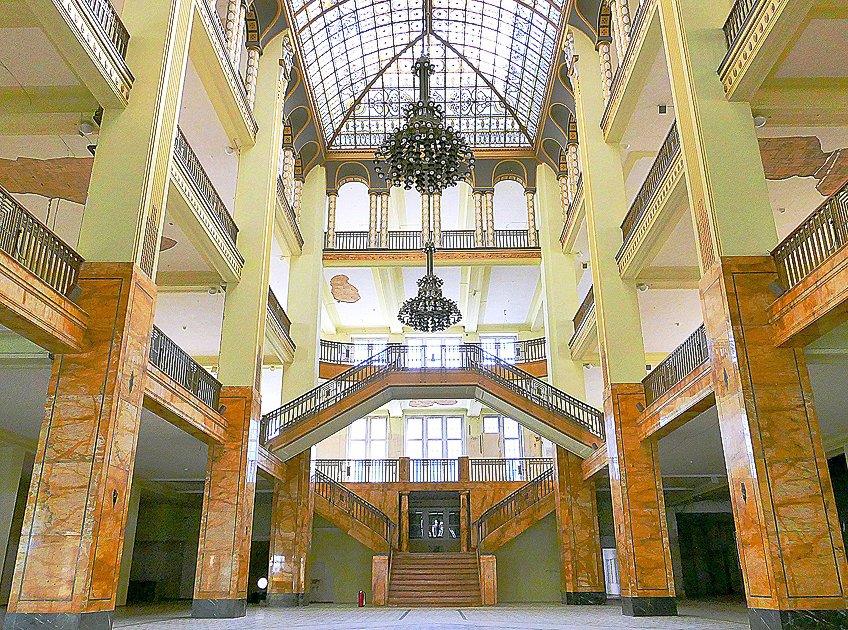
Blade Runner 2049 (2017)
| Film Name | Blade Runner 2049 |
| Director | Denise Villenueve |
| Cinematographer | Roger Deakins |
| Year of Release | 2017 |
| Main Cast | Ryan Gosling, Harrison Ford, and Ana de Armas |
One such film that immediately springs to mind is Blade Runner 2049, directed by Denis Villeneuve and lensed by the incomparable Roger Deakins. Set in a dystopian future, the film is a visual marvel, painting a bleak yet mesmerizing portrait of a world filled with towering skyscrapers, neon-lit streets, and desolate landscapes. Deakin’s use of lighting and framing is exquisite, creating hauntingly beautiful compositions that not only serve the narrative but also evoke a profound sense of atmosphere and mood. Every frame feels meticulously crafted, with each shot telling a story of its own, making Blade Runner 2049 a masterclass in visual storytelling.

Dunkirk (2017)
| Film Name | Dunkirk |
| Director | Christopher Nolan |
| Cinematographer | Hoyte van Hoytema |
| Year of Release | 2017 |
| Main Cast | Fionn Whitehead, Tom Hardy, and Cillian Murphy |
Moreover, Christopher Nolan’s Dunkirk exemplifies the power of visual storytelling through its immersive and visceral cinematography by Hoyte van Hoytema. The film’s unique narrative structure, coupled with van Hoytema’s stunning camerawork, plunges viewers into the heart of the harrowing evacuation during World War II.
The use of IMAX cameras and practical effects lends an unparalleled authenticity to the film, capturing the intensity and chaos of war with breathtaking precision.

Roma (2018)
| Film Name | Roma |
| Director | Alfonso Cuarón |
| Cinematographer | Alfonso Cuarón |
| Year of Release | 2018 |
| Main Cast | Yaltiza Aparicio, Marina de Tavira, and Diego Cortina Autrey |
In the realm of black and white cinematography, Roma, directed by Alfonso Cuarón, stands as a breathtaking achievement. Cuarón, who also served as the cinematographer for the film, delivers a profoundly intimate and visually arresting portrait of 1970s Mexico City. Shot in luminous monochrome, Roma captures the beauty in the mundane, using long takes and carefully choreographed movements to immerse the audience in the lives of its characters. The cinematography not only captures the emotional depth of the story but also pays homage to the artistry of classic cinema, showcasing the timeless elegance of black and white imagery.

These films represent a mere fraction of the vast landscape of cinematic masterpieces that showcase the best of what cinematography has to offer. They serve as shining examples of how visuals can transcend mere storytelling, becoming an integral part of the narrative itself. Through innovative techniques, artful compositions, and a deep understanding of the visual language, these films leave an indelible mark, inspiring filmmakers and audiences alike to appreciate the boundless possibilities of cinematography in crafting unforgettable cinematic experiences.
How to Start Your Career as a Cinematographer
Embarking on a career as a cinematographer is a journey that demands not only technical expertise but also a creative vision and relentless passion for visual storytelling. The role of a cinematographer, often referred to as the director of photography (DP), involves a mastery of the art and science of capturing moving images that breathe life into narratives on screen.
If you aspire to step into the world of cinematography, here’s an illustrative guide on how to commence your path towards this captivating profession.
Master the Basics
Before diving into the complexities of cinematography, it is crucial to build a solid foundation of knowledge. Learn the fundamentals of photography, understand composition, lighting techniques, camera operations, and the principles of visual storytelling. Enroll in film schools, workshops, or online courses specializing in cinematography to gain theoretical understanding and practical skills.

Hands-On Experience
Practical experience is invaluable. Offer to work on student films, short films, or any independent projects where you can get involved in the camera department. Volunteer as a camera assistant (1st or 2nd AC), grip, or in lighting departments to grasp the workings of a film set.
This hands-on experience will familiarize you with equipment, set etiquette, and the collaborative nature of filmmaking.
Build Your Portfolio
Start creating your portfolio by shooting your own projects or collaborating with aspiring filmmakers. Showcase your versatility by experimenting with different genres, styles, and visual aesthetics. A strong portfolio that exhibits your skills and creativity will be your calling card in the competitive field of cinematography.
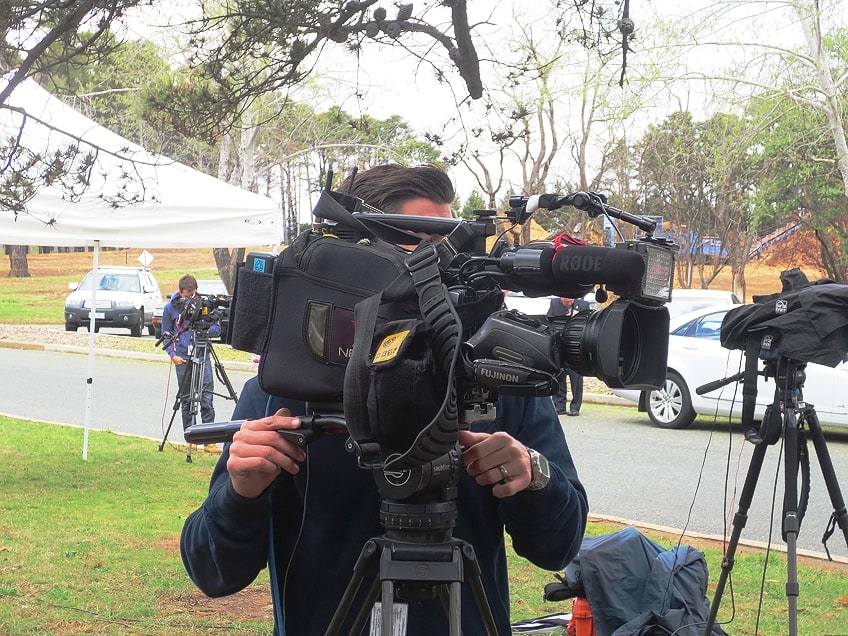
Networking and Collaboration
Networking is pivotal in the film industry. Attend and take part in film festivals, before then moving onto industry events to connect with fellow filmmakers, directors, producers, and other cinematographers. Doing so, and engaging in discussions, and building relationships will open up doors to collaboration on future projects.
Often, opportunities arise through referrals and connections made within the industry.
Assistant Roles and Mentorship
Consider working as a camera assistant under experienced DPs. Assisting seasoned professionals allows you to learn firsthand, observing their techniques, and understand the workflow on larger productions. Seek mentorship from established cinematographers who can provide guidance and advice as you progress in your career.
Continuous Learning and Adaptation
Cinematography is a continuously evolving art form with new technologies and techniques emerging at an ever-increasing pace. Stay updated with industry trends, advancements in camera equipment, software, and visual effects.
Embrace learning as a lifelong journey and be adaptable to change in the dynamic landscape of filmmaking.
Create Your Visual Style
Develop your unique visual style and signature aesthetic. Experiment with different lighting setups, framing, color palettes, and camera movements to define your artistic voice. A distinctive style can make you stand out in a competitive market and attract directors seeking a specific visual sensibility for their projects.
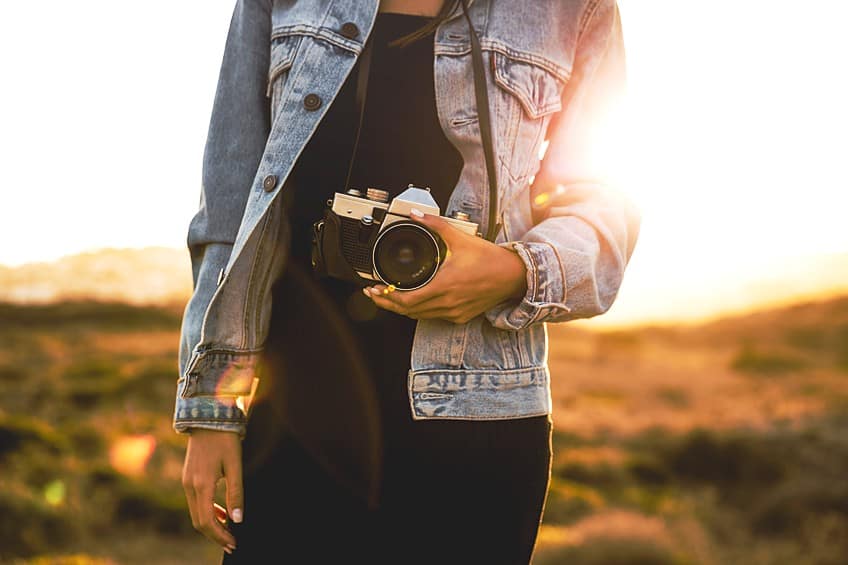
Equipment Familiarity
Familiarize yourself with a variety of camera systems, lenses, lighting gear, and post-production tools. While having access to high-end equipment is beneficial, understanding how to achieve desired visuals regardless of the gear available is an essential skill for a cinematographer.
Persistence and Resilience
The path to becoming a successful cinematographer can be challenging and demanding. Be prepared for rejections, setbacks, and long hours on set. Persistence, resilience, and a strong work ethic are key attributes that will help you navigate through the highs and lows of the industry.
Showcase Professionalism
Maintain professionalism, reliability, and a positive attitude on and off set. Respect the collaborative nature of filmmaking, communicate effectively, and build a reputation for being someone who is not only skilled but also easy to work with. Starting a career as a cinematographer requires dedication, perseverance, and a genuine love for the art of visual storytelling. Remember, every project, whether big or small, contributes to your growth and experience. Embrace opportunities, continuously learn, hone your craft, and let your passion for cinematography shine through in every frame your capture. With commitment and hard work, your journey towards becoming a revered cinematographer begins with the first steps you take today.
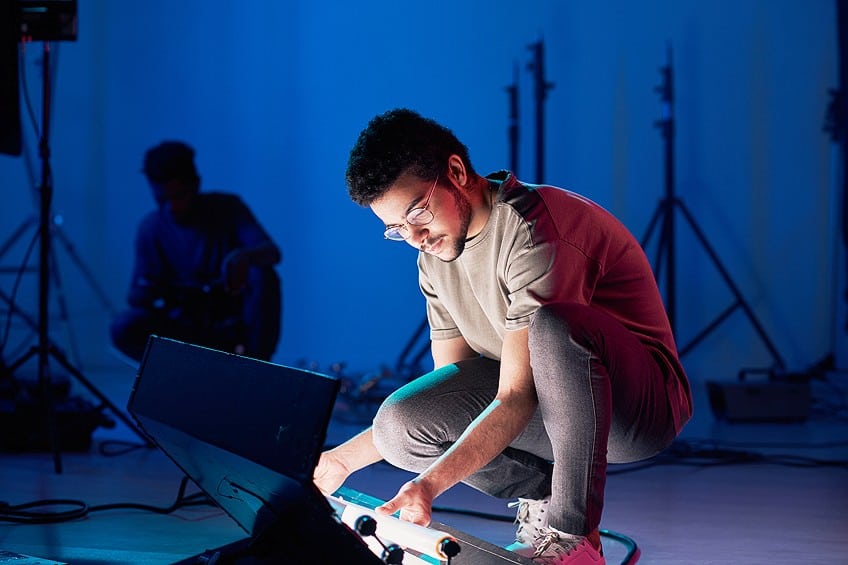
Cinematography, the artful orchestration of light, framing, and movement, transcends mere visual representation – it is storytelling in its most captivating form. It is the painterly strokes of light and shadow that evoke emotions, the deliberate composition that frames narratives, and the fluidity of camera movements that transport audiences. Cinematography is the harmonious marriage of technical expertise and artistic vision, a symphony conducted by skilled hands and creative minds. It is the language through which tales come to life, immersing viewers in worlds both familiar and fantastical, leaving an indelible imprint long after the screen fades to black.
Frequently Asked Questions
What Is Cinematography?
Cinematography refers to the art and technique of capturing moving images on film or digitally. It involves the deliberate use of lighting, framing, camera movement, composition, and visual aesthetics to create a visual narrative in films, television shows, documentaries, and other visual media.
What Does a Cinematographer Do?
A cinematographer, also known as the director of photography (DP), is responsible for translating the director’s vision into visual imagery. They collaborate closely with the director to determine the visual style, select appropriate camera equipment, design lighting setups, frame shots, and oversee the camera crew to ensure the desired look and feel of the project is achieved.
What Skills Are Essential for a Career in Cinematography?
Essential skills for a cinematographer include a deep understanding of camera equipment, lighting techniques, composition, storytelling, and visual aesthetics. Communication, collaboration, problem-solving, creativity, and adaptability are also crucial in this field.
Duncan completed his diploma in Film and TV production at CityVarsity in 2018. After graduation, he continued to delve into the world of filmmaking and developed a strong interest in writing. Since completing his studies, he has worked as a freelance videographer, filming a diverse range of content including music videos, fashion shoots, short films, advertisements, and weddings. Along the way, he has received several awards from film festivals, both locally and internationally. Despite his success in filmmaking, Duncan still finds peace and clarity in writing articles during his breaks between filming projects.
Duncan has worked as a content writer and video editor for artincontext.org since 2020. He writes blog posts in the fields of photography and videography and edits videos for our Art in Context YouTube channel. He has extensive knowledge of videography and photography due to his videography/film studies and extensive experience cutting and editing videos, as well as his professional work as a filmmaker.
Learn more about Duncan van der Merwe and the Art in Context Team.
Cite this Article
Duncan, van der Merwe, “What Is Cinematography? – Lights, Camera, Action!.” Art in Context. December 11, 2023. URL: https://artincontext.org/what-is-cinematography/
van der Merwe, D. (2023, 11 December). What Is Cinematography? – Lights, Camera, Action!. Art in Context. https://artincontext.org/what-is-cinematography/
van der Merwe, Duncan. “What Is Cinematography? – Lights, Camera, Action!.” Art in Context, December 11, 2023. https://artincontext.org/what-is-cinematography/.





